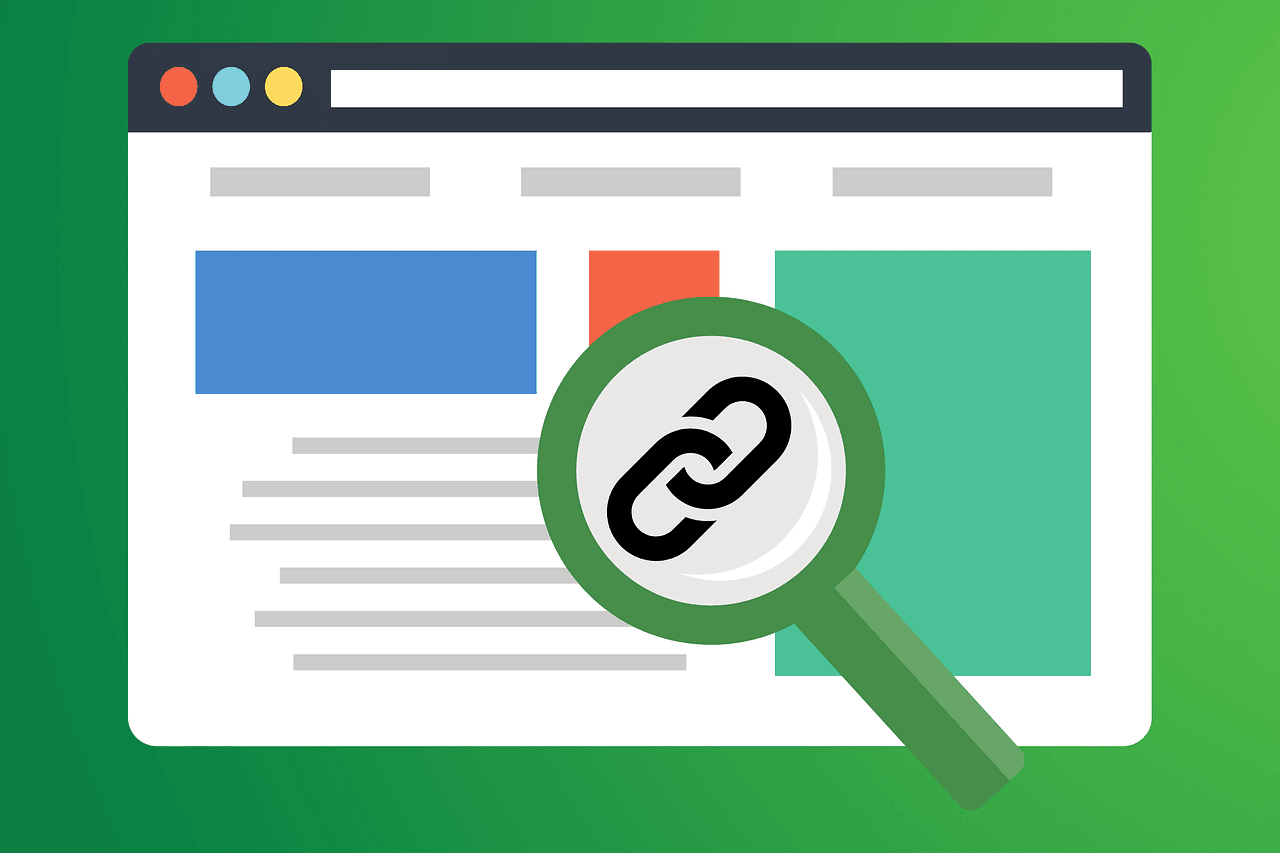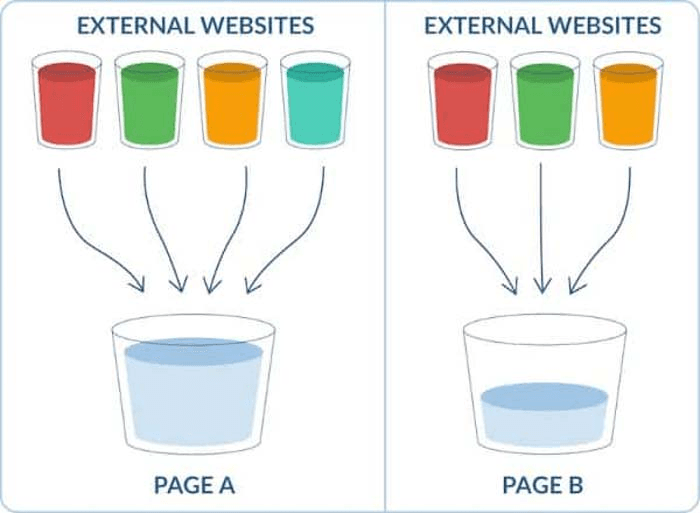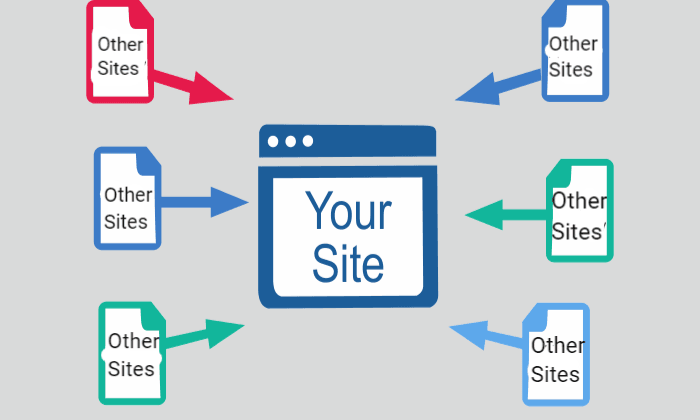Helpful Summary
Overview: Dive into the strategies and tactics you need to master for a top-notch SEO content audit.
Why Listen to Us: Keyword Metrics is a content audit tool in true spirit. We simplify the SEO content audit process by offering comprehensive insights into keyword performance.
Why It Matters: Learning how to perform a content audit is essential for maintaining a high-performing website, guaranteeing content remains relevant, optimized, and aligned with SEO best practices.
Action Points: Learn the fundamentals of a content audit and the techniques and approaches needed to conduct a successful review of your content.
Further Research: Visit the Keyword Metrics Blog to understand its auditing benefits and access expert tips on conducting fast and efficient audits.
Want To Learn the Fundamentals of an SEO Content Audit?
Ever wonder why your website isn’t ranking as well as it should despite having great content? An SEO content audit could be the missing piece. An SEO audit goes beyond just checking for errors; it uncovers opportunities to refine your content strategy, improve user experience, and drive more organic traffic.
In this Keyword Metrics guide, we'll walk you through the steps and effective techniques for conducting an SEO content audit.
Why Trust Us?
At Keyword Metrics, we offer comprehensive insights into your website’s performance, helping you identify areas for improvement.
We are, in essence, an effective content audit tool that helps you uncover keywords that Google already associates with your website and discover opportunities for enhancing your targeting.
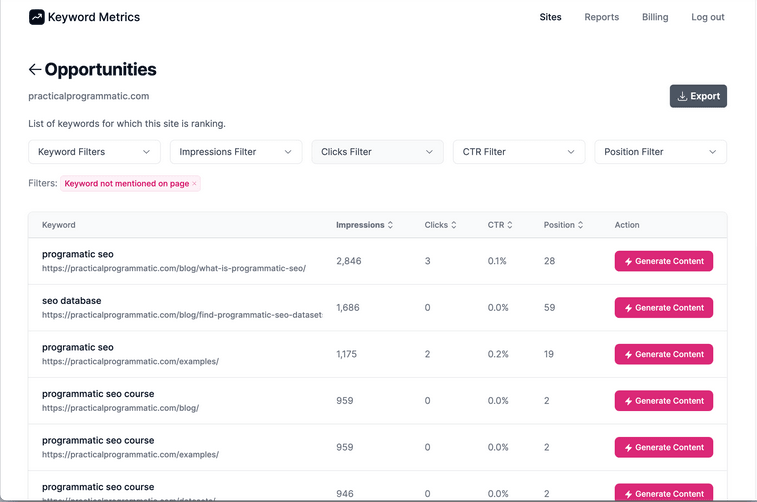
Our advanced keyword tracking, content optimization features, and user-friendly interface make it easy to analyze rankings, keyword density, and SEO gaps.
What is an SEO Content Audit?
An SEO content audit is like a health check-up for your website’s content, ensuring it’s in top shape to rank higher on search engines. By examining everything from keyword optimization to content structure and relevance, an SEO audit uncovers hidden opportunities to boost visibility and performance.
How To Perform an SEO Content Audit
1. Set Your Goals for the Audit
Before diving into the audit, determine your goals. Are you aiming to improve search rankings, boost traffic, increase user engagement, or refresh outdated content?
For example, your goal could be achieving more than 100,000 visits per month.
Set a firm goal right from the start because it shapes how you assess content performance and determine the success of your efforts after making any changes.
Check out some common goals people have when they embark on a content audit:
Improve SEO Performance: Boost rankings for target keywords, increase organic traffic, and enhance visibility on search engines.
Identify and Fix Underperforming Content: Pinpoint pages with low traffic, high bounce rates, or poor engagement, and either optimize or delete them.
Update Outdated Content: Refresh old blog posts or articles with up-to-date information, statistics, and unique keywords to keep content relevant and competitive.
Optimize Content for Conversions: Identify areas where content can be more compelling or include better calls-to-action (CTAs) to improve lead generation or sales.
Improve Content Structure and Internal Linking: Organize your content logically and incorporate useful internal links to enhance navigation and SEO.
Enhance User Experience: Enhance the user experience by boosting readability, optimizing for mobile, and speeding up page load times. Create an engaging and attractive website that keeps visitors coming back for more!
Now that you have a clear goal in mind, it's time to customize your content audit process. Identify the key metrics you'll be honing in on as you gauge your current performance.
2. Collect and Classify Content
Compiling an inventory of your content is a foundational step in conducting an SEO content audit. It involves creating a thorough list of all the content on your website so you can systematically evaluate and improve it. Here’s how to do it:
a) Use Website Crawler Tools
Want to start reviewing content? First, you need to decide what type of content you'll be looking at and gather all the relevant URLs. You can do this manually using a spreadsheet or an advanced online website crawler tool to help you create a list of all the pages.
These tools give you all sorts of great info, like page titles, URLs, meta descriptions, and word counts, which will form the foundation of your content inventory.
If your site is larger than a few pages, you will likely want to use a content audit tool like Keyword Metrics. Our powerful filters and sorting options empower you to scale your SEO and find the existing content that is primed for growth.
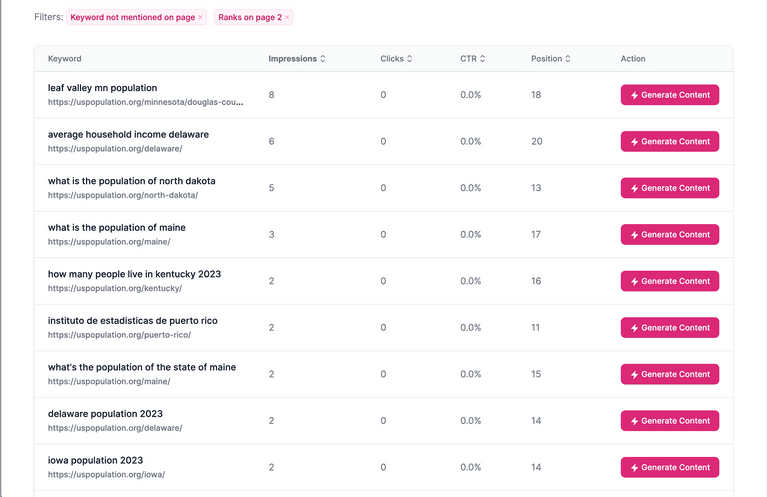
b) Export and Organize the Data
Export the crawl data into a spreadsheet (Google Sheets or Excel). Organize the spreadsheet by adding columns for vital information, such as the following:
Page URL: The exact link to each content page.
Title: The title tag of the page.
Meta Description: A summary of the page’s meta description.
Date Published: When the content was initially published.
Last Updated: When the content was last modified.
Word Count: The total word count of the page’s content.
Primary Keyword: The main keyword for which each page is optimized.
Traffic Data: Add columns for page views, bounce rate, and average time on the page.
To delve deeper and gain a more in-depth understanding, incorporate columns for the following:
Rankings: How the page ranks for its primary keyword using external tools.
Backlinks: The number and quality of backlinks to the page.
Internal Links: The number of links pointing to or from the page.
Content Type: Label whether it’s a blog post, product page, landing page, etc.
c) Segment the Content Inventory
Categorize your content into segments based on content type, theme, or performance. For example, you might group blog posts, product pages, and service pages separately. This segmentation is critical when it comes to analyzing your content inventory.
d) Highlight Key Metrics
Use conditional formatting to highlight pages that need attention, such as those with low traffic, high bounce rates, or outdated content. This nifty trick will help you figure out which content needs your immediate focus—whether updating, removing, or optimizing.
3. Analyze Your Content's Performance
Now that you have a list of your pages, it’s time to look closely at how each page is doing. Evaluating the performance of each content section will give you valuable insights into where you currently stand so you can progress toward your goals.
Organic traffic plays a vital role in determining the success of your SEO efforts. It denotes how much unpaid traffic your website receives from search engines like Google.
Having substantial organic traffic is key as it often leads to more meaningful actions on your site, such as form submissions and product purchases.
For example, you can use Google Analytics to find out how much organic traffic your content pages are receiving.
To do so, log in to Google Analytics and choose the site you’re auditing.
Go to “Traffic acquisition” under “Reports” and set the date range.
Determine the timeframe you want to cover and collect all the URLs for the content created during that period.
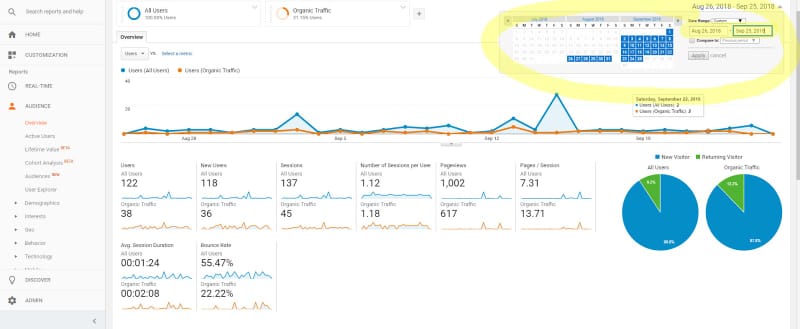
Use Google Analytics or similar tools to review other KPIs, such as the following:
Bounce Rate: Are visitors leaving the page quickly without engaging?
Average Time on Page: How long do users spend reading the content?
Conversions: Is the content driving users to take desired actions (e.g., signups, purchases, etc.)?
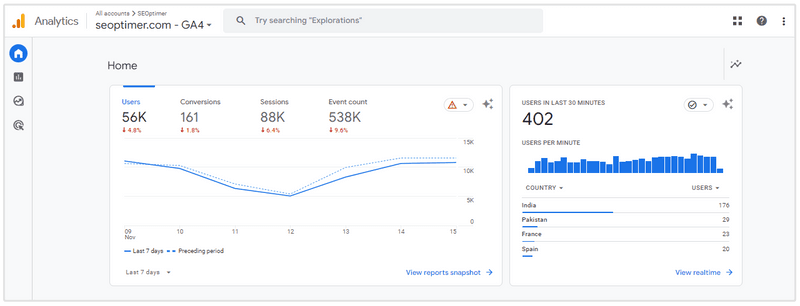
4. Check for Keyword Optimization
Are your web pages targeting the right keywords? Are they making it to the top three search results? Or are they lingering further down the search engine results pages (SERPs)?
The next step is to find out where your content pages currently rank for their primary target keyword. Let’s make sure they’re getting the attention they deserve.
Using a tool like Keyword Metrics guarantees that your content is fine-tuned with appropriate keywords that match your audience’s search intent.
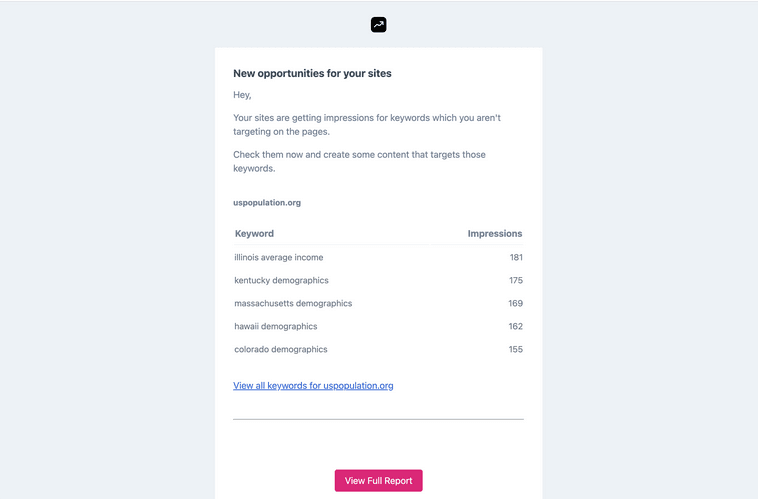
Ensure that primary keywords are used naturally in the following elements:
Title
Meta description
Header tags (H1, H2, etc.)
Body content
Alt text of images
Do not overuse keywords that harm readability or lead to search engine penalties.
5. Evaluate Backlinks
Backlinks are crucial to an SEO content audit because they significantly influence your website’s authority, search engine rankings, and organic traffic. Evaluating backlinks during an audit helps you assess the quality and effectiveness of your link-building efforts. Here’s how to incorporate backlinks into your SEO content audit:
Find the total number of backlinks and the number of referring domains using an appropriate tool.
Focus on the quality of backlinks, not just the quantity. High-quality backlinks come from authoritative, relevant websites and have a more substantial impact on SEO.
Check for toxic backlinks. Identify and disavow spammy backlinks from link farms or untrustworthy domains that may harm your SEO.
During the audit, flag pages with little to no backlinks. These pages may need additional promotion or link-building efforts to improve their authority and visibility in search engines.
Check the anchor text used in backlinks to your site. Ensure that it is natural and relevant to the content being linked to.
After analyzing your backlinks, create a strategy to improve your link-building efforts. This might involve:
Reaching out to authoritative sites for guest posts or mentions.
Promoting high-quality content to attract natural backlinks.
Fixing broken backlinks by redirecting old pages or updating URLs.
6. Update, Improve, or Remove Content
Looking to breathe new life into your old content? Try spicing things up by integrating fresh statistics, updating information, and implementing the latest SEO strategies.
Enhancing keyword targeting, adding valuable content, or refining your CTA can boost the visibility of pages with limited traffic or lackluster rankings.
When dealing with content that is no longer relevant or excessively outdated, it might be time to bid it farewell or merge it with other related material.
Perform Audit With the Best Content Audit Tool
An SEO content audit is imperative for identifying underperforming content, optimizing for search engine visibility, and ensuring your website stays competitive. It helps improve rankings, drive organic traffic, and enhance user experience. The discussion above makes it clear that you need a dynamic and robust tool to help you through this audit journey.
Keyword Metrics has the ability to track rankings, analyze keyword density, and identify gaps in your content strategy. We help you make data-driven decisions to boost your SEO.
We also streamline the process of assessing backlinks, improving internal linking strategies, and refining keyword usage.
Transform your rankings with Keyword Metrics and watch your website soar. Get started today.
Interested in learning what SEO keywords are and how to use them?
